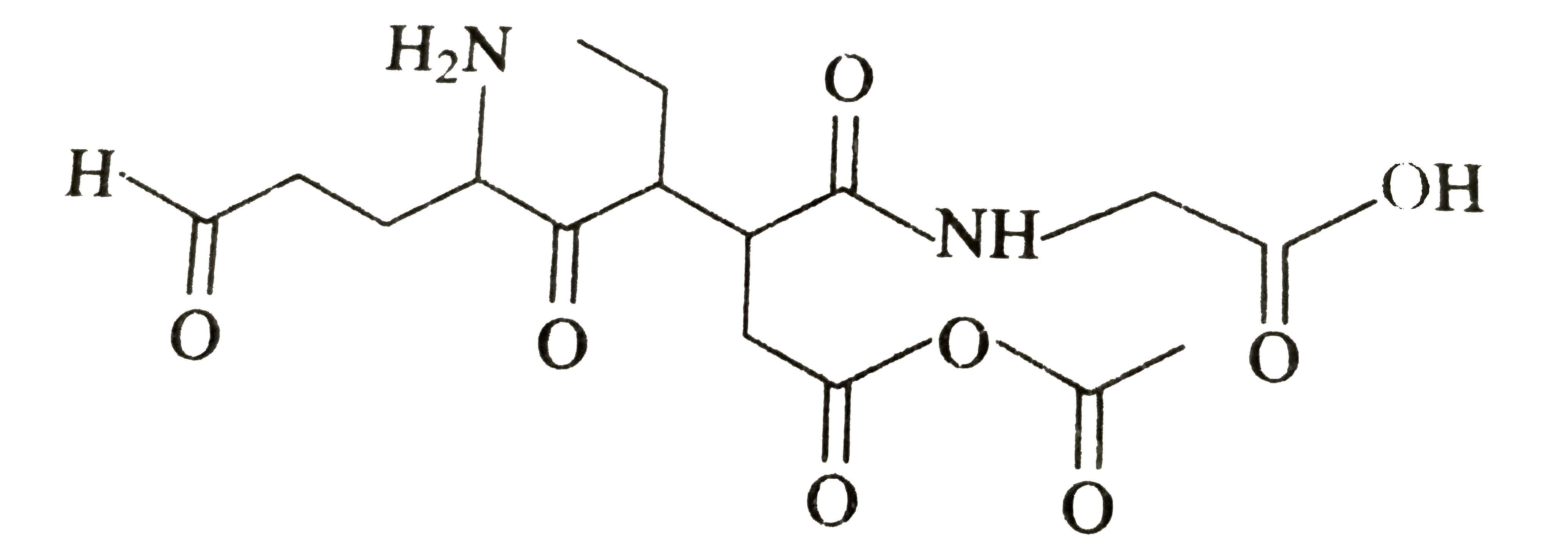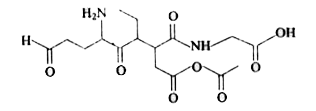A compound with molecular mass 180 is acylated with CH3COCl to get a compound with molecular mass 390. the number of amino groups present per molecule of the former compound is-
The correct Answer is:5
To solve the problem, we need to determine the number of amino groups present in a compound with a molecular mass of 180 after it is acylated with acetic chloride (CH₃COCl) to yield a compound with a molecular mass of 390.
1. Identify the Initial and Final Molecular Masses:
- The initial compound has a molecular mass of 180 g/mol.
- After acylation with CH₃COCl, the final compound has a molecular mass of 390 g/mol.
2. Calculate the Change in Molecular Mass:
- The change in molecular mass due to acylation can be calculated as:
Change in mass=Final mass−Initial mass=390g/mol−180g/mol=210g/mol
3. Determine the Mass Increase per Amino Group:
- When an amino group (NH₂) is acylated, it is converted to an acylated amino group (NHCOCH₃). The mass change for one NH₂ group can be calculated as follows:
- Mass of NH₂ = 14 (N) + 2 (H) = 16 g/mol
- Mass of NHCOCH₃ = 14 (N) + 1 (C) + 3 (H from CH₃) + 16 (O) = 58 g/mol
- Therefore, the increase in mass per acylation is:
Increase=Mass of NHCOCH₃−Mass of NH₂=58g/mol−16g/mol=42g/mol
4. Calculate the Number of Amino Groups:
- Now, we can find the number of amino groups (n) in the original compound by dividing the total mass increase by the mass increase per amino group:
n=Total mass increaseMass increase per amino group=210g/mol42g/mol=5
5. Conclusion:
- Therefore, the number of amino groups present per molecule of the former compound is 5.
- The initial compound has a molecular mass of 180 g/mol.
- After acylation with CH₃COCl, the final compound has a molecular mass of 390 g/mol.
- The change in molecular mass due to acylation can be calculated as:
Change in mass=Final mass−Initial mass=390g/mol−180g/mol=210g/mol
- When an amino group (NH₂) is acylated, it is converted to an acylated amino group (NHCOCH₃). The mass change for one NH₂ group can be calculated as follows:
- Mass of NH₂ = 14 (N) + 2 (H) = 16 g/mol
- Mass of NHCOCH₃ = 14 (N) + 1 (C) + 3 (H from CH₃) + 16 (O) = 58 g/mol
- Therefore, the increase in mass per acylation is:
Increase=Mass of NHCOCH₃−Mass of NH₂=58g/mol−16g/mol=42g/mol
- Now, we can find the number of amino groups (n) in the original compound by dividing the total mass increase by the mass increase per amino group:
n=Total mass increaseMass increase per amino group=210g/mol42g/mol=5
- Therefore, the number of amino groups present per molecule of the former compound is 5.
Similar Questions
Knowledge Check
An unknown compound (A) (molarmass = 180) on acylation gives a product (molar mass = 390) than find the number ofhydroxyl group present in compound (A).
A5B6C10D1
Number of functional groups present in the following compound
is :

View SolutionA compound of mol wt. 180 is acetylated to give a compound of molecular wt. 390. What is the number of amine in the initial compounds?
View SolutionAn oxide of nitrogen has a molecular weight of 30. Total number of electrons in one molecule of the compound is
View SolutionThe empirical formula of a compound of molecular mass 120 is CH2O. The molecular formula of the compound is :
View SolutionAmines are basic in nature and show many types of reactions such as substitution, Hoffmann elimination, carbylamine, acylation, diazotisation etc.
Certain nitrogeneous compound with molecular mass 180 shows an increase in its molecular mass to 348 after treatment with acetyl chloride. The number of possible -NH2 groups in the molecule is...................
View SolutionA compound with molecular formula C6H10O4 on acylation with acetic anhydride gives a compound with molecular formula C12H18O8. How many hydroxyl groups are present in the compound?
View SolutionAn organic compound 'A' having molecular formula C5H10O6 on acetylation forms a compound having molecular weight 334. Number of hydroxy group (-OH) in the compound 'A' is:
View Solution

